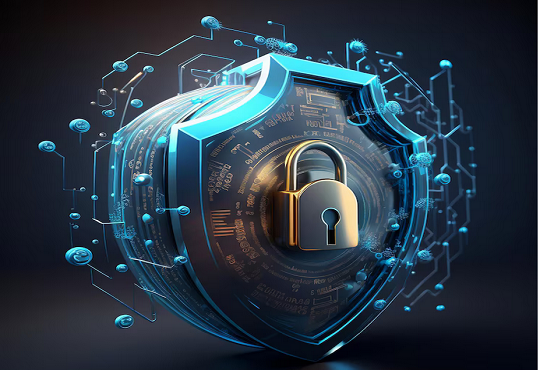Measuring the ROI of Extended Detection and Response (XDR)
Janifha Evangeline, Assistant Editor, CIOTechOutlook | Saturday, 23 March 2024, 22:12 IST

Recently, Cato Networks made announcements of the availability of AI-powered tools that aim to quickly identify outages & conduct root-cause analysis as part of its XDR & cloud-based secure access service edge solution. Part of the Cato SASE Cloud platform Network Stories, Cato XDR leverages AI algorithms which are trained for analyzing network signals & detect security anomalies & threats.
“With our converged security and networking platform, we leverage advances in one domain, in this case security, to help another domain – networking,” said Shlomo Kramer, CEO and co-founder of Cato Networks, in a statement.
XDR (extended detection and response) from being listed as one of the top 10 Security Projects for 2020-2021 by Gartner to several leaders labeling it “the latest evolution,” XDR has emerged as an exciting new holistic approach that is followed to proactive protection against the current sophisticated cyber-attacks. The solution has also displayed the promise of transforming the scale & efficiency of the Security Operations Center. Since the interest as well as adoption of XDR is continuing to increase rapidly, it is imperative for security leaders look past industry hype in order to understand how XDR can be leveraged for impacting their companies. Selecting the right XDR solution is a critical decision which needs careful consideration. Look beyond the technology itself & evaluate how it will enable better detection & response outcomes. Shortlist partners who understand the journey, provide flexibility & can help in adapting alongside your firm. Ultimately, an XDR solution should not just be about the tools it renders but how it empowers your security team to meet & exceed your specific security objectives.
For several years, defining ROI for a cyber-security project, comprising the Return on Investment of XDR was challenging. It was difficult to describe the actual value of several protections which were implemented in a company. Most often, the explanation regarding how a product would enhance security was a nebulous description of what would occur in the absence of that protection. In this article let us look at the importance of measuring the ROI of XDR and the various benefits XDR bring to organizations.
Cost Savings & Risk mitigation
XDR can result in significant cost savings by consolidating numerous security tools into a single platform and this can help companies to reduce their expenses which are related to licensing fee, maintenance costs as well as staffing training. Moreover, the streamlining of security operations lead to operational efficiency gains since fewer resources are needed for managing disparate solutions.
Implementing XDR facilitates enterprises to mitigate the cyber-attacks and data breaches risks. XDR decreases the likelihood of successful security incidents by offering advanced threat detection capabilities & facilitating rapid incident response, thereby protecting the assets and reputation of the company.
Some of the top organizations offering XDR solutions include Singularity XDR, Cynet, CrowdStrike, Cybereason, and others.
Compliance enhancement
XDR helps companies to meet the regulatory compliance needs by rendering comprehensive visibility into security events & facilitating incident reporting & documentation, which decreases the risks such as non-compliance penalties & associated costs.
“Extended Detection and Response (XDR) solutions are emerging that automatically collect and correlate data from multiple security products to improve threat detection and provide an incident response capability. XDR is cross layered detection and response,” says Dr. Makarand Sawant, Senior General Manager-IT, Deepak Fertilizers & Petrochemicals Corporation Limited.
Overall security maturity
Assessing the ROI of XDR solutions hinges on the value that is derived from improving & consolidating the current security investments. Companies evaluate Return on Investment by determining whether an open XDR strategy lets using comprehensive data collection, analysis for effectively identifying and responding to threats, and standardization. This assessment is not only based on the technology stack, it is also based on the operational outcomes it supports that contribute to the overall security maturity.
“A holistic XDR solution - one that connects endpoint, identity and threat intelligence together, ensuring coverage everywhere (cloud, on-prem, mobile, unmanaged devices, and more) - is the only way to solve this effectively,” says Kapil Raina, Identity Protection Evangelist, CrowdStrike.
“When it is done right, organizations have unified cross-domain detections and investigations to effectively connect the dots, understand the context, and automate the risk response to stop or contain adversary attacks,” he adds.
Improved Threat Detection & Response:
XDR improves the ability of a company to effectively detect & respond to cyber threats. XDR enables early detection of malicious activities & helps in proactive threat hunting & remediation, by correlating data from numerous sources & utilizing advanced analytics & ML.
“Extended detection and response (EDR) solutions continuously monitor endpoints for suspicious behavior and automatically take action to prevent threats. They collect and process security event feeds and use analytics to protect against advanced persistent threats and zero-day attacks,” says Rohit Singal, Vice President, Sales, Rahi-Data Centres.
Measuring the Return on Investment of XDR comprises evaluating the value it offers to a company that include risk mitigation, overall security posture, operational efficiency and cost savings. While most of the benefits are quantifiable that include efficiency gains, cost reductions and others like improved threat detection & response capabilities which are more qualitative in nature.




